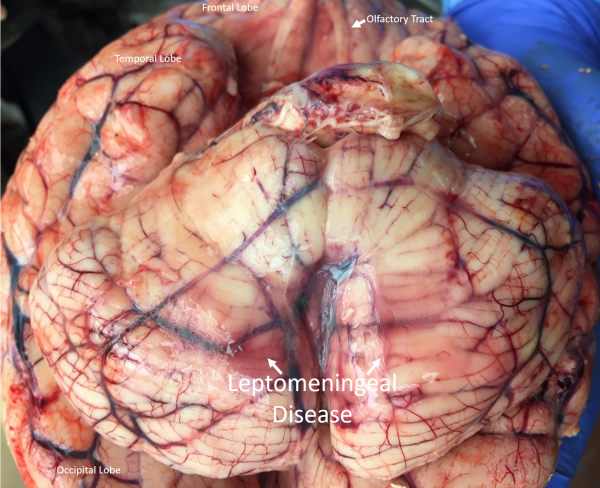Mystery case review #3 is one of a series of videos designed to review the variety of brain tumors that arise in the context of a familial tumor syndromes. Test your knowledge with questions posed to the audience in a quiz like format. In-depth answers are provided for each quiz question. This series is perfect... Continue Reading →
Video: Board Prep – Familial Tumor Syndrome, Mystery Case #1
Mystery case review #1 is the first of a series of videos designed to review the variety of brain tumors that arise in the context of a familial tumor syndromes. Test your knowledge with questions posed to the audience in a quiz like format. In-depth answers are provided for each quiz question. This series is... Continue Reading →
Resorption of Embolic Material in Arteriovenous Malformation (AVM)
Vascular brain lesions have increased risk of intracranial bleeding and, therefore, present a challenge to neurosurgeons attempting surgical resection. Such tumors may first be embolized prior to surgical excision in order to reduce the risk of bleeding. Onyx, an ethylene vinyl alcohol copolymer, is one of many embolic agents available to accomplish this task. Onyx has... Continue Reading →
Periventricular Leukomalacia (PVL)
Periventricular Leukomalacia (PVL) is a type of brain damage that affects fetuses and premature babies. At this stage of brain development, the white matter surrounding the ventricles is particularly vulnerable to hypoxic (lack of oxygen) or ischemic (lack of blood flow) injury for a variety of reasons, including high metabolic demand in a location that... Continue Reading →
Ice Cream and Imaging: Typical Appearance of Vestibular Schwannoma
Cranial nerve schwannomas most commonly arise from Schwann cells that myelinate the distal aspect of the vestibular division of the 8th cranial nerve. Vestibular schwannomas, sometimes referred to by the double misnomer "acoustic neuroma" (it is a double misnomer because they are not neuromas and they do not usually involve the acoustic division of cranial... Continue Reading →
Brain Eating Amoeba
Naegleria fowleri, better known as "brain-eating amoeba", is a free-living amoeba that is a major cause of a rare brain infection called Primary Amebic Meningoencephalitis, which typically affects young people with a history of swimming in warm fresh water such as a lake or stream. After entering the nose and crawling up the olfactory nerves... Continue Reading →
Malignant Meningitis
The brain is surrounded by several layers of protective coverings collectively called meninges. The semi-translucent innermost layers, called the leptomeninges, form a "shrink-wrap" around the brain that allows for easy flow of cerebrospinal fluid (CSF) along the outer surface of central nervous system structures. Unfortunately, it also allows for easy spread of neoplastic cells. The image shows the inferior aspect... Continue Reading →
Myxopapillary Ependymoma: Radiology-Pathology Correlation
Myxopapillary ependymoma arises in the lumbar region of the spinal cord and typically produces symptoms associated with impingement of the spinal nerve roots of the cauda equina. It usually appears as an oval or sausage-shaped contrast-enhancing mass, like the one pictured in this MRI image (sagittal post-contrast T1 Fat-sat). The myxopapillary ependymoma in the inset photograph represents a gross surgical... Continue Reading →
Secretory Meningioma: A unique Meningioma variant
The secretory subtype of meningioma (pictured here) is just one of many variants of meningioma, a usually histologically benign tumor that arises from the meninges (i.e. the outer coverings overlying the brain) and often contains concentrically-layered calcifications called psammoma bodies. The secretory variant can be suspected on imaging by the exuberant edema often seen in the adjacent brain tissue. Microscopically,... Continue Reading →
True Ependymal Rosettes in Ependymoma
The microscopic appearance of ependymomas is dominated by the presence of radially-arranged tumor cells forming rosettes (black arrows), which are named for their resemblance to the flower-like architecture of rose windows in gothic cathedrals. The perivascular pseudorosette, characterized by tumor cells radially arranged around a central vessel, is more common by far, but it is not specific to... Continue Reading →










